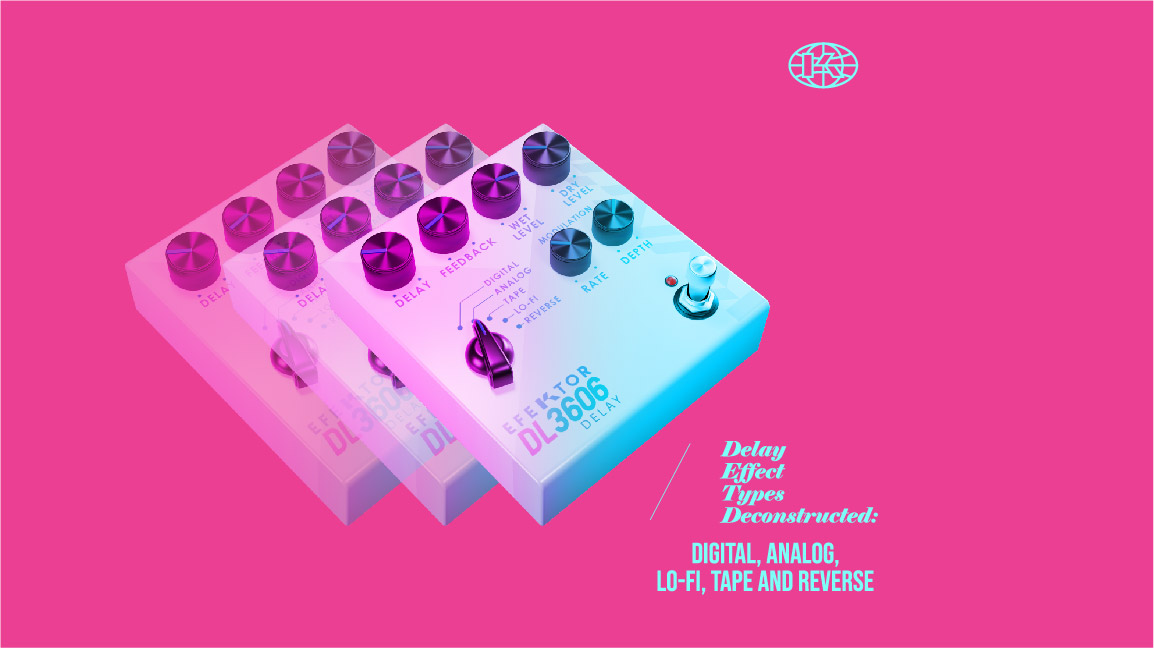
Kuassa’s Efektor Delay – Efektor DL3606 Delay
We at Kuassa are working hard and in today’s fast-moving technology we are proud to produce the best audio plugins, Mainly oriented into the guitar effects software in form of amplifiers as known as amp simulators and pedal effects software in a pedal format. Our modeling technology perfectly emulates the hardware units, following the path and each stage in the hardware schematics.
This plugin provides 5 types of delay effects software at your disposal:
- Digital: Clean and clear, with a wide frequency range.
- Analog: Dark and mushy, inspired by the bucket brigade delay pedals
- Lo-Fi: Grainy and dirty, lower bit-rate with the reduced frequency range
- Tape: Simulated the warm and lush sound of vintage tape units
- Reverse: Repeats the signal backward for ethereal and ambient effect
Key Features:
- 5 popular delay types
- Modulation section with individual Rate and Depth controls
- Separate Wet and Dry controls
- BPM sync
- Photorealistic graphics for the lifelike guitar playing experience
- Straightforward and easy to use interface
- Digital: Clean.
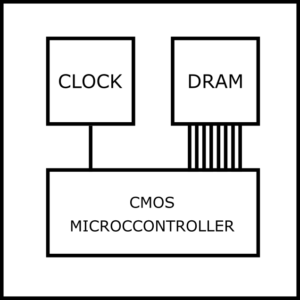 It is a surgically clean delay. The repetitions retain the clarity of the signal without any degradation. It is ideal for producers who need the full spectrum of the instrument preserved in the mix, the effect is clear and transparent. Great for modern mixes, adding space on vocals, synths, guitar themes, and solos. Great to be put on your send bus, A general workhorse.
It is a surgically clean delay. The repetitions retain the clarity of the signal without any degradation. It is ideal for producers who need the full spectrum of the instrument preserved in the mix, the effect is clear and transparent. Great for modern mixes, adding space on vocals, synths, guitar themes, and solos. Great to be put on your send bus, A general workhorse.
Example:
Angels & Airwaves – Anxiety
https://www.youtube.com/watch?v=9FD4QydQkIM
Tip:
The delay is set at 134 tempo in the 8th dotted note repetition.
- Analog: Warm.
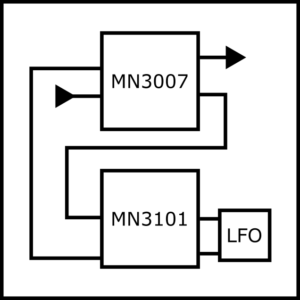
The BBD chip developed by Phillips in the 60’ TDA 1022 was the first one and later licensed by other manufacturers. Another famous one is the Panasonic BBD MN 3000 series.
When the signal is delayed, the signal is held and released by small capacitors inside the BBD chip stacked in series, the time variation and the latency happening inside each cap while releasing the signal to the next one is producing the delay effect. After a few repetitions, a small amount of noise is introduced and the signal is degraded. The repeats will sound duller and smeared compared to the original signal. To smooth out the audio, the circuit design uses frequency filters to filter out the introduced noise. Usually a pair of low pass filters: on the input and the output stages. The filtering creates the warmth and the smoothness tone of the analog delay.
This kind of delay sounds awesome on guitars, great on analog synths. Use it on solo guitars or anything you want to warm up and have that “analog” tone that is satisfying to the ear.
Tip: Use short delay time around 50ms-150ms range for Slapback Echo and the feedback almost on zero.
- Lo-Fi: Grainy and dirty.
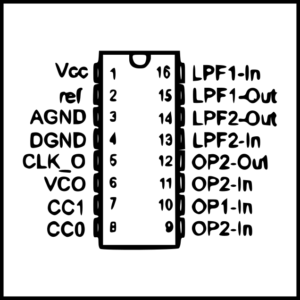
The PT2399 chip is a CMOS echo/delay processor developed by Princeton Technology Corp. The digital chip includes an Analog to Digital converter, 44Kb of RAM to store the sampled audio and a Digital to Analog converter. This chip became popular in the guitar players community because of the ability to emulate BBD-based delay circuits.
The darker and warmer delay/echo sound is produced by the nature of the design and the limited frequency response of the signal, around 2 kHz- 5 kHz. This also uses filters to filter out aliasing artifacts due to the sampling degradation in the process. The delayed audio signal is less bright and sounds close to reflected audio in the real world, absorbed by natural materials. Sounds amazing on guitars! Awesome with synths!
It is one of the most appreciated chips and widely used by DIY builders and many Boutique guitar pedal builders. The Efektor DL3606 Delay plugin is modeled after the PT2399 without any trade-off.
- Tape: A Classic.
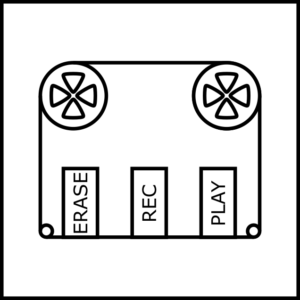 As we started in our previous article, the tape delay is where everything started. Engineers created delay – echo effects using tape machines stacked together
As we started in our previous article, the tape delay is where everything started. Engineers created delay – echo effects using tape machines stacked together
Kuassa’s tape model in the Efektor DL3606 Delay Plugin is carefully modeled with filtered stages and musical sounding saturation, recreating the natural behavior of the reel to reel tape machines. The slight changes and variations in the tape speed that creates the “wow” and “flutter” so-called effects with slight pitch variations are easy to be heard when changing the time settings and the feedback repetitions.
Example:
Elvis Presley’s version of “Mystery Train”: https://www.youtube.com/watch?v=Q_eE0NPArEY
Pink Floyd – ” Run Like Hell “: https://www.youtube.com/watch?v=1vBF8aY_mtY
Tip: David Gilmour “Run Like Hell” delay.
Even though the effect used by Gilmour was the famous Binson Echorec, We can recreate the same sound with the Tape Model with DL3606
Short Historical Info:
1961 and 1979
Produced in Milan, Italy, They were unique in their construction, utilizing a specially designed steel/alloy disc or drum, which carried a durable flat metal tape
The drum was driven by a powerful AC motor, in most cases, via a rubber jockey wheel, which kept the transport very stable. Record and playback heads were arranged around the drum periphery. – from the Binson site
Use two instances of DL3606:
- Set up one, your main, delay for 380ms, with 7-8 repeats and unity level with the guitar.
- Set up a second one, placed after the first, with 507ms, 7-8 repeats, and low mix/level.
Tip:
Automate the time knob in your DAW changing slightly the time at some places in the arrangement, that needs some excitement. This will affect the pitched tails in the feedback.
It’s a nice sound design idea.
The fluttering and the warm tone never gets old. It brings back that missing ingredient to the digital “cold” and “sterile” recordings. It’s great for Reggae, dub space echo effects, and 60s – 70s psychedelic delay guitar sounds. You can also put it before the amp simulator to get even more coloration.
Tip:
When using the delay software plugin effect in your Reggae tone, you “should” use the sync settings with the tempo of the song – 4, 8, or 16 beats. Experiment with the duration of the note.
For Dub delay, use high wet settings as a starting point.
- Reverse Delay: backward
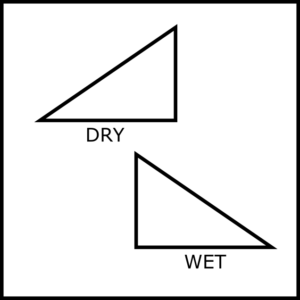 Reverse Delay is an effect that could drive your creative thinking and open a new page in your compositions. Modern Styles like Shoegaze and EDM are two examples using the reverse delay as a foundation for creating background soundscapes. A whole generation of Ambient guitar players is using the reverse delay for creating dreamy and big sounding harmonic compositions. Shoegaze guitar tones from bands like My Bloody Valentine, Slowdive and Ride are a great example of how the guitar could be transformed into another instrument.
Reverse Delay is an effect that could drive your creative thinking and open a new page in your compositions. Modern Styles like Shoegaze and EDM are two examples using the reverse delay as a foundation for creating background soundscapes. A whole generation of Ambient guitar players is using the reverse delay for creating dreamy and big sounding harmonic compositions. Shoegaze guitar tones from bands like My Bloody Valentine, Slowdive and Ride are a great example of how the guitar could be transformed into another instrument.
Tip: Use the Reverse delay plugin and tweak the modulation control in stereo mode. Bring the feedback up, sync it with your song BPM. Use it for Intros or for background “pads” in your arrangement. Play slow and melodically.
Tip: Use a few instances of Efektor DL3606 Delay in the Reverse mode with different timing and modulation settings to create deep and dreamy ambient guitar instrumentals.
A few Songs with Reverse Delay:
Jimi Hendrix – “Castles Made of Sand”
Linkin Park – “Somewhere I Belong”
King Crimson – “Three of a perfect pair”
Coldplay – “Strawberry Swing”
REM – “What’s The Frequency, Kenneth”

